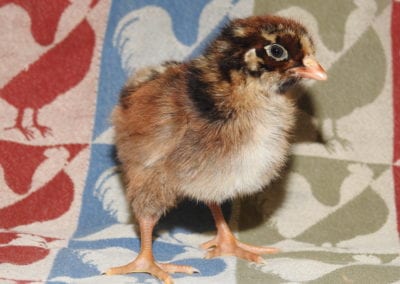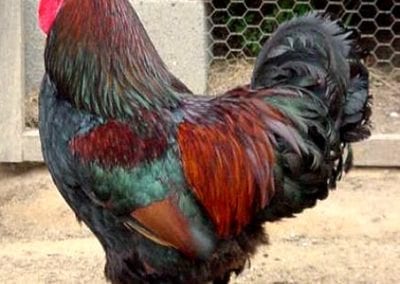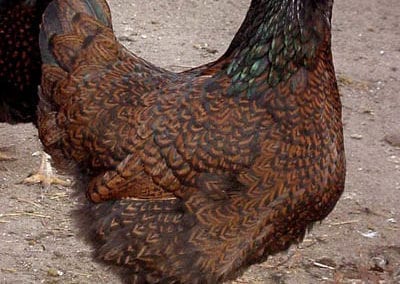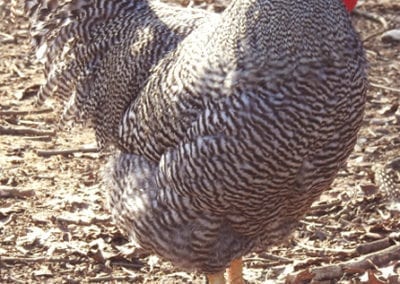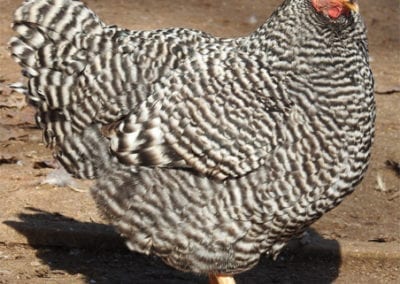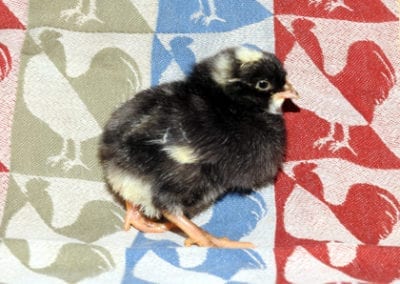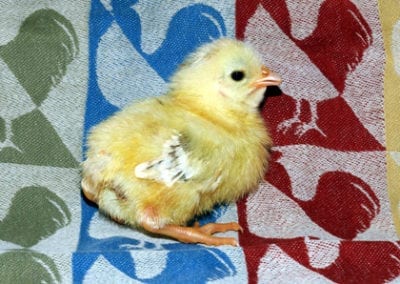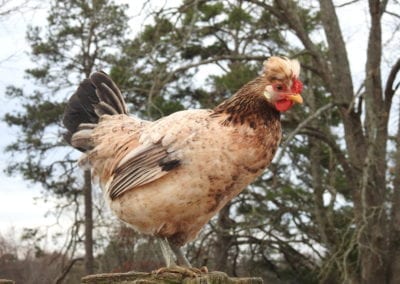
Poultry
Chickens
1 Kings 4:23
Among the daily provisions for Solomon’s table “fatted fowl” are included.

Barnevelder
From Barneveld, in the Netherlands to Virginia, this rare breed of chicken has made its way into the American homestead. The most attractive feature about this breed, is the double lacing in the hen’s plumage. A mature cock displays a lustrous plumage with iridescent shades of green, purple, and bronze. The Barnevelder exhibits a single comb.
Barnevelders are a calm mid-size fowl with a lot to offer for the poultry fancier. They are great for exhibition, free range, and for utility purposes: brown eggs or meat. Egg color can range from speckled golden-brown eggs, brown, light brown or cream colored. Chicks are slow to mature; they can be table-ready at about 6 months of age.
It is a hardy chicken that rarely presents any severe health issues. It is also a quiet breed that does well in smaller confined areas. The breed was first recognized by the American Standard of Perfection in 1991.
Our line of Barnevelders exist since 1997. From the start, we have bred to meet the standard of perfection of this still rare, but growing in popularity breed.
Barred Rock
America’s favorite! This iconic breed of chicken is the hallmark of the barnyard. Barred Plymouth Rock chickens, which are also sometimes called Plymouth Rocks or Barred Rocks, are thought to be one of the United States’ oldest chicken breeds. The American Standard of perfection accepted them in 1874.
Barred Rocks are identified by their black and white stripes that cause them to stand out from the flock. They exhibit a single comb. Barred Rocks are a calm large fowl with a lot to offer the poultry fancier and have long been preferred for small farms and homesteads, due to their size, productivity, and gentle personalities. They are friendly, layers of large brown eggs and able to tolerate colder environments.
Our line of Barred Plymouth Rocks derived from well-known breeder Marvin Stukel. From the start, we have bred to meet not only, Stukel’s standard for perfection of this popular breed, but keeping with the American Standard of Perfection in our management, as well.
Icelandic
Introduced to the Norse Settlers of Iceland by way of the Vikings in the 9th century AD. These landrace birds became a common fowl throughout the island for centuries. Íslenska landnámshænan, the native Norse language, translates to “Icelandic hen of the Settlers.”
During the 1950’s, the breed was almost extinct. Flocks that exist today are descended from small groups preserved during the 1970’s. Smaller than standard large fowl, dressed Icelandics are a hardy breed of modest table size. providing medium size white eggs.
They portray nearly every plumage pattern; hatchlings might not display the same coloring of the parents. Leg color can be either yellow, willow, or slate. Icelandics produce medium size white eggs.
This breed is more nervous and flightier – alert and reacting quickly to danger; they do very well on free range. They can present various types of combs, the most common comb occurring, is the single comb, followed then by the rose comb, although other combs are possible. Ear lobes are white. Both hen and cock are crested.
The American Standard of Perfection accepted this breed in 1888.
Our line of Icelandics began from well-known lines out of Harvey Ussery and David Grote. From the start, we have bred to continue their high standard of this rare landrace breed.
Please note: This breed has not yet been recognized by the American Poultry Association.
CornerStone Farm
Hosts: Barb and Ward Halligan
thefarm@cornerstonefarm.net
525 Barnes Road, Red Oak, VA 23964
Visit All Our Featured Services
